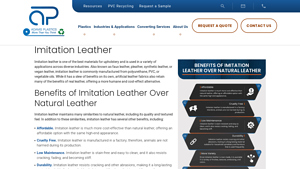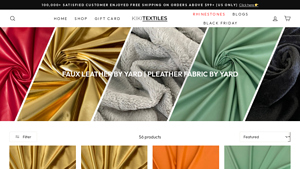Introduction: Navigating the Global Market for plastic leather
In today’s competitive landscape, sourcing high-quality plastic leather, also known as faux leather or synthetic leather, poses a significant challenge for international B2B buyers. With a myriad of options available, from PU leather to PVC alternatives, understanding the nuances of these materials is crucial for making informed purchasing decisions. This guide serves as a comprehensive resource, detailing various types of plastic leather, their applications across multiple industries, and essential supplier vetting strategies.
As global demand for sustainable and cost-effective materials continues to rise, plastic leather emerges as a compelling alternative to genuine leather, offering durability and aesthetic appeal at a fraction of the cost. This guide will empower B2B buyers from Africa, South America, the Middle East, and Europe—particularly in markets like Germany and Brazil—to navigate the complexities of sourcing. We will cover key considerations such as pricing structures, quality assessments, and the latest trends in design and functionality.
By leveraging the insights provided, businesses can confidently approach their sourcing strategies, ensuring they align with their operational needs and market demands. Whether you are looking to furnish a commercial space or develop innovative products, this guide will equip you with the knowledge necessary to make strategic and informed choices in the evolving plastic leather market.
Table Of Contents
- Top 3 Plastic Leather Manufacturers & Suppliers List
- Introduction: Navigating the Global Market for plastic leather
- Understanding plastic leather Types and Variations
- Key Industrial Applications of plastic leather
- 3 Common User Pain Points for ‘plastic leather’ & Their Solutions
- Strategic Material Selection Guide for plastic leather
- In-depth Look: Manufacturing Processes and Quality Assurance for plastic leather
- Practical Sourcing Guide: A Step-by-Step Checklist for ‘plastic leather’
- Comprehensive Cost and Pricing Analysis for plastic leather Sourcing
- Alternatives Analysis: Comparing plastic leather With Other Solutions
- Essential Technical Properties and Trade Terminology for plastic leather
- Navigating Market Dynamics and Sourcing Trends in the plastic leather Sector
- Frequently Asked Questions (FAQs) for B2B Buyers of plastic leather
- Strategic Sourcing Conclusion and Outlook for plastic leather
- Important Disclaimer & Terms of Use
Understanding plastic leather Types and Variations
| Type Name | Key Distinguishing Features | Primary B2B Applications | Brief Pros & Cons for Buyers |
|---|---|---|---|
| PU Leather | Soft, supple texture; often hard to distinguish from genuine leather | Upholstery, automotive, fashion accessories | Pros: Durable, easy to clean, lower cost. Cons: Limited breathability compared to genuine leather. |
| PVC Leather | Stiffer feel; more affordable; often has a glossy finish | Budget-friendly upholstery, fashion items, outdoor furniture | Pros: Cost-effective, water-resistant. Cons: Less durable than PU leather; can crack over time. |
| Vegan Leather | Made from non-animal sources; eco-friendly options available | Sustainable fashion, furniture, and accessories | Pros: Ethical choice, diverse textures. Cons: Quality can vary; may not have the same luxury feel as leather. |
| Microfiber Leather | Ultra-soft finish; mimics the look and feel of suede | High-end upholstery, fashion, automotive interiors | Pros: Soft, durable, stain-resistant. Cons: May require special care to maintain appearance. |
| Synthetic Suede | Soft and fuzzy texture; often used as a leather alternative | Apparel, upholstery, automotive interiors | Pros: Affordable, versatile. Cons: Not as durable as other faux leathers; can stain easily. |
What are the characteristics of PU Leather and its B2B suitability?
PU leather, or polyurethane leather, is known for its soft, supple texture that closely resembles genuine leather. It is a versatile material widely used in upholstery for furniture, automotive interiors, and fashion accessories. B2B buyers should consider its durability and ease of cleaning, making it suitable for high-traffic environments. However, its limited breathability compared to genuine leather may affect its suitability for certain applications, particularly in warm climates.
How does PVC Leather differ from other types of plastic leather?
PVC leather, or polyvinyl chloride leather, is characterized by its affordability and glossy finish. It is commonly used in budget-friendly upholstery and fashion items. While PVC leather is water-resistant and cost-effective, it tends to be less durable than PU leather and can crack over time. B2B buyers should weigh the cost benefits against the potential need for more frequent replacements when considering PVC leather for their projects.
What makes Vegan Leather an attractive option for B2B buyers?
Vegan leather is crafted from non-animal sources, making it an eco-friendly alternative to traditional leather. It is available in a variety of textures and styles, appealing to businesses looking to promote sustainability. Common applications include sustainable fashion and furniture. While vegan leather offers ethical advantages, the quality can vary significantly, so buyers should conduct thorough assessments to ensure they select high-quality options that meet their needs.
Why is Microfiber Leather gaining popularity in the B2B market?
Microfiber leather features an ultra-soft finish that mimics the luxurious feel of suede. It is increasingly used in high-end upholstery, fashion items, and automotive interiors due to its durability and stain resistance. B2B buyers should consider microfiber leather for applications where both aesthetics and functionality are paramount. However, it may require special care to maintain its appearance, which is an important consideration for businesses focused on long-term usage.
What are the benefits and drawbacks of Synthetic Suede?
Synthetic suede is known for its soft, fuzzy texture, making it a popular leather alternative for apparel and upholstery. Its affordability and versatility make it appealing to various industries, including automotive and fashion. However, B2B buyers should be aware that synthetic suede may not be as durable as other faux leather options and can be prone to staining. Careful consideration of the specific application is crucial to ensure it meets the project’s durability requirements.

Illustrative image related to plastic leather
Key Industrial Applications of plastic leather
| Industry/Sector | Specific Application of plastic leather | Value/Benefit for the Business | Key Sourcing Considerations for this Application |
|---|---|---|---|
| Furniture Manufacturing | Upholstery for residential and commercial use | Cost-effective, durable, and easy to clean | Quality certifications, color and texture options |
| Automotive | Interior car upholstery | Lightweight, water-resistant, and customizable | Compliance with automotive standards, fire resistance |
| Fashion and Accessories | Handbags, wallets, and apparel | Vegan-friendly, versatile in design and texture | Material sourcing for sustainability, trend alignment |
| Marine Industry | Boat interiors and outdoor seating | Weather-resistant, durable under marine conditions | UV resistance, compatibility with marine-grade materials |
| Healthcare | Upholstery for medical furniture | Easy to sanitize, stain-resistant, and durable | Compliance with health regulations, antimicrobial options |
How is Plastic Leather Used in Furniture Manufacturing?
In the furniture manufacturing sector, plastic leather is primarily utilized for upholstery in both residential and commercial settings. Its affordability—up to 75% less than genuine leather—makes it an attractive option for manufacturers looking to minimize costs while maintaining aesthetic appeal. The material’s durability and ease of maintenance address common issues such as stains and wear, which are crucial for high-traffic environments like hotels and restaurants. For international buyers, sourcing should focus on quality certifications and a diverse range of colors and textures to meet varying consumer preferences.
What Role Does Plastic Leather Play in the Automotive Sector?
In the automotive industry, plastic leather is extensively used for car interiors, including seats and dashboards. Its lightweight nature contributes to improved fuel efficiency, while its water-resistant properties enhance longevity, making it suitable for diverse climates. Customizability allows manufacturers to offer a range of designs that appeal to different markets. Buyers should consider compliance with automotive safety standards and seek materials with fire-resistant properties to ensure safety and durability in vehicles.
How is Plastic Leather Transforming Fashion and Accessories?
Plastic leather has emerged as a popular choice in the fashion industry for creating handbags, wallets, and apparel. This vegan alternative to traditional leather appeals to environmentally conscious consumers and brands. Its versatility in design and texture allows for innovative fashion statements. For B2B buyers, sourcing considerations include ensuring the material aligns with current trends and sustainability practices, as well as the ability to provide a variety of finishes to cater to different fashion lines.
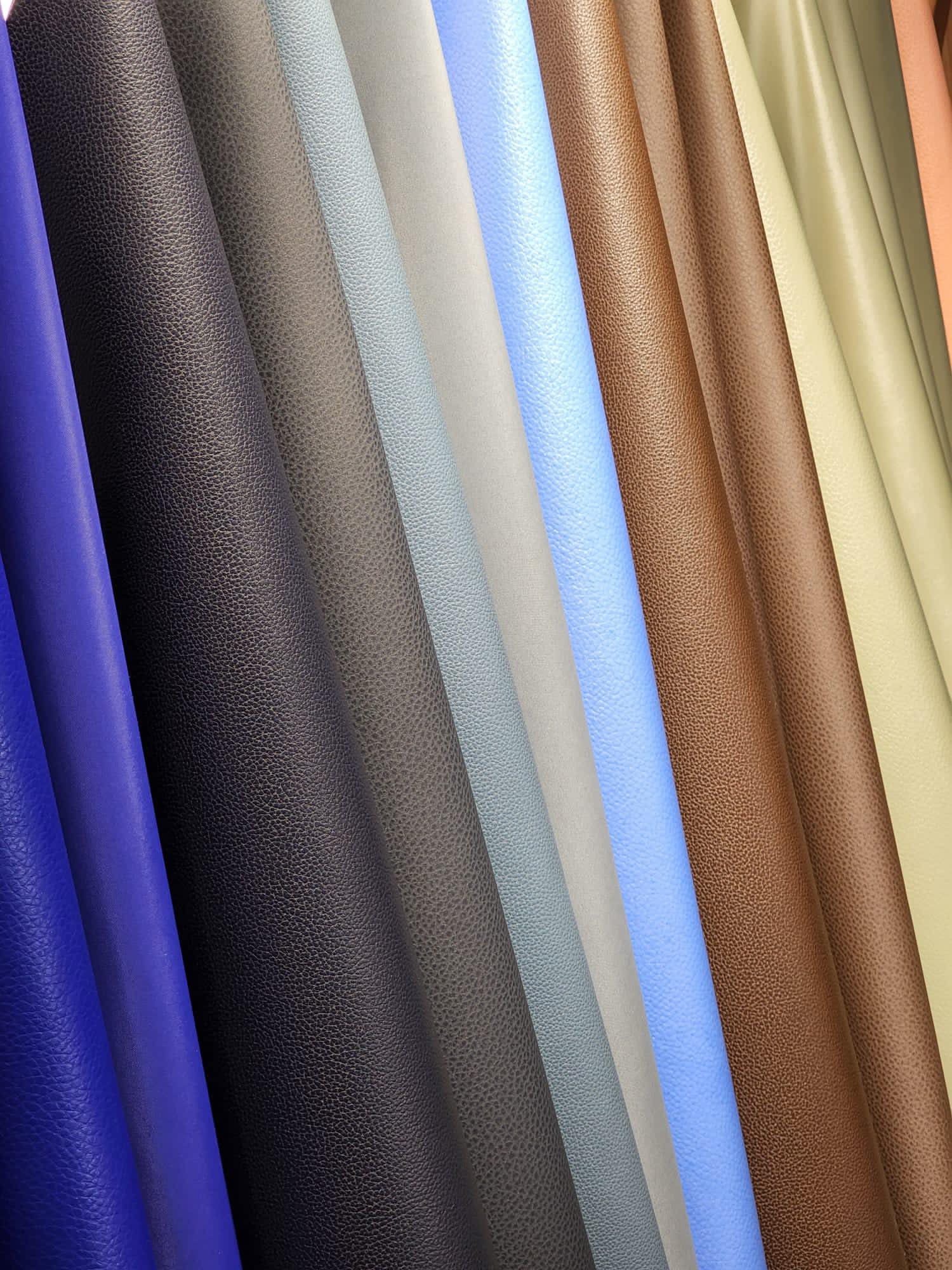
Illustrative image related to plastic leather
What Advantages Does Plastic Leather Offer the Marine Industry?
In the marine industry, plastic leather is used for boat interiors and outdoor seating. Its weather-resistant properties make it ideal for environments exposed to moisture and UV rays, ensuring longevity and ease of maintenance. The material can withstand harsh marine conditions, addressing issues like mold and deterioration. Buyers in this sector should prioritize UV resistance and compatibility with marine-grade materials to ensure that their products remain durable and visually appealing over time.
How is Plastic Leather Beneficial in Healthcare Settings?
Plastic leather finds significant application in the healthcare sector, particularly for medical furniture upholstery. Its easy-to-sanitize nature and stain-resistant qualities are essential in maintaining hygiene standards in hospitals and clinics. The durability of the material ensures that it can withstand the rigors of daily use in healthcare environments. When sourcing for this application, buyers must ensure compliance with health regulations and may also seek antimicrobial options to enhance safety and patient care.
3 Common User Pain Points for ‘plastic leather’ & Their Solutions
Scenario 1: Sourcing High-Quality Plastic Leather for Diverse Applications
The Problem: B2B buyers often struggle to find high-quality plastic leather that meets specific project requirements across various applications, such as automotive upholstery, furniture, or marine uses. This challenge is compounded by the vast number of suppliers and products available in the market, leading to confusion regarding quality, durability, and sustainability. For instance, a buyer in the automotive industry may require a material that not only mimics the look of genuine leather but also offers resistance to wear and tear while being easy to clean.
The Solution: To effectively source high-quality plastic leather, buyers should establish clear specifications based on their project needs. This includes understanding the material composition (e.g., PU vs. PVC), performance characteristics (e.g., abrasion resistance, water repellency), and sustainability credentials (e.g., eco-friendliness and animal-friendliness). It is advisable to request samples from multiple suppliers to assess texture, flexibility, and color fidelity. Engaging with suppliers who provide detailed product information, including technical data sheets, will help ensure that the selected plastic leather meets the necessary standards for durability and application. Additionally, forming long-term relationships with a few trusted suppliers can streamline sourcing and ensure consistent quality across projects.
Scenario 2: Ensuring Compliance with Industry Standards and Regulations
The Problem: Many B2B buyers face difficulties in ensuring that their chosen plastic leather products comply with industry standards and regulations, particularly in sectors like automotive and healthcare where safety and performance criteria are stringent. Non-compliance can lead to costly recalls, legal challenges, and damage to brand reputation. For example, a furniture manufacturer may unknowingly select a faux leather that does not meet fire retardancy standards, jeopardizing their market entry.
The Solution: Buyers should conduct thorough due diligence before finalizing their plastic leather purchases. This involves researching and understanding the relevant industry standards applicable to their specific use cases, such as fire safety regulations in furniture or UV stability for outdoor applications. It’s crucial to request compliance documentation from suppliers, including certifications and test reports. Furthermore, collaborating with industry consultants or participating in trade associations can provide insights into emerging regulations and best practices. Establishing a checklist of compliance criteria tailored to their industry can also help streamline this process and mitigate risks associated with non-compliance.
Scenario 3: Managing Cost-Effectiveness Without Compromising Quality
The Problem: Cost management is a significant concern for B2B buyers, especially when sourcing plastic leather. While it’s tempting to select the cheapest option available, this can lead to compromises in quality, resulting in higher long-term costs due to product failures or customer dissatisfaction. A buyer for a retail chain may find that lower-cost plastic leather products are prone to cracking and fading, ultimately leading to higher replacement rates and negative customer feedback.
The Solution: To balance cost-effectiveness with quality, buyers should focus on the total cost of ownership (TCO) rather than just the initial purchase price. This involves evaluating factors such as durability, maintenance needs, and product lifespan. Conducting a cost-benefit analysis can help buyers determine the long-term value of investing in higher-quality plastic leather, which may have a higher upfront cost but will last longer and require less frequent replacement. Additionally, leveraging bulk purchasing agreements or long-term contracts with manufacturers can result in discounts while ensuring access to superior materials. Establishing a quality assurance process, including regular audits of suppliers, will also help maintain standards and reduce the risk of costly product failures down the line.
Strategic Material Selection Guide for plastic leather
What Are the Key Materials Used in Plastic Leather Production?
Plastic leather, commonly known as faux leather or synthetic leather, is produced using various materials, each with distinct properties, advantages, and limitations. Understanding these materials is crucial for B2B buyers looking to make informed purchasing decisions. Below, we analyze four common materials used in the production of plastic leather: Polyurethane (PU), Polyvinyl Chloride (PVC), Bio-based Leather, and Recycled Leather.
How Does Polyurethane (PU) Leather Perform in Various Applications?
Polyurethane (PU) leather is a popular choice due to its soft texture and leather-like appearance. It is produced by applying a flexible polymer coating to a fabric backing, resulting in a durable and aesthetically appealing product. PU leather is known for its high resistance to abrasion and is often used in furniture, automotive upholstery, and fashion accessories.
Pros: PU leather is significantly more affordable than genuine leather, costing up to 75% less. It is also water-resistant, stain-resistant, and easy to clean, making it suitable for various applications.
Cons: While PU leather is durable, it may not be as long-lasting as PVC in extreme conditions. Additionally, it can be less resistant to UV light, leading to potential fading over time.
Impact on Application: PU leather is ideal for environments where aesthetics and comfort are important, such as high-end furniture and fashion items. However, it may not be suitable for outdoor applications without additional UV protection.
Considerations for International Buyers: Compliance with international standards such as ASTM and DIN is essential, especially in markets like Europe and Germany, where regulations on material safety and environmental impact are stringent.
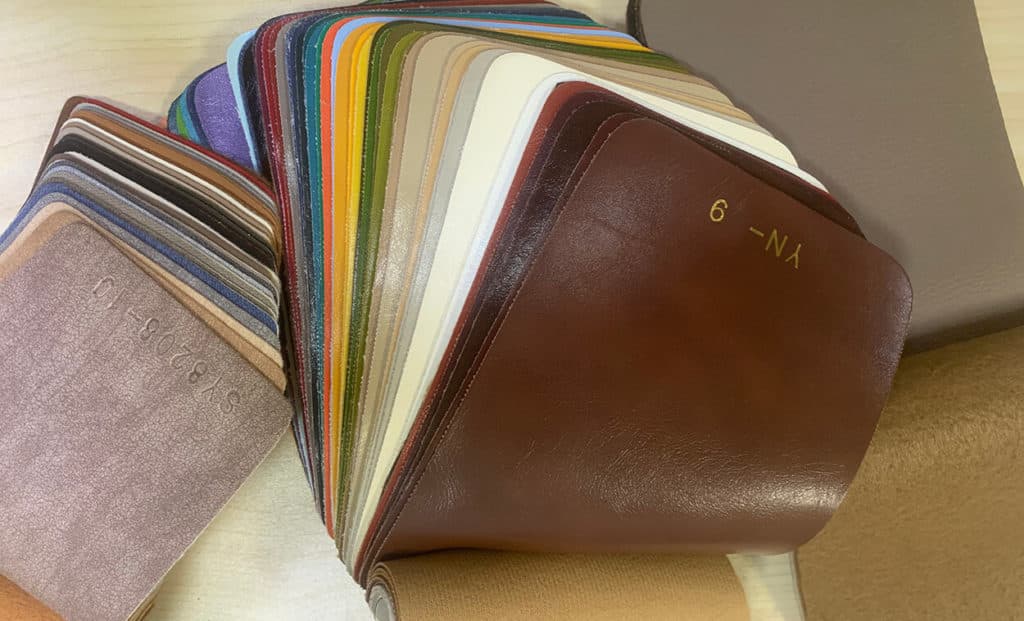
Illustrative image related to plastic leather
What Are the Advantages and Limitations of Polyvinyl Chloride (PVC) Leather?
Polyvinyl Chloride (PVC) leather is another widely used synthetic leather material. It is created by combining PVC with various additives to enhance its flexibility and durability. PVC leather is particularly known for its high resistance to moisture, making it suitable for outdoor and marine applications.
Pros: PVC leather is highly durable, resistant to water, and can withstand harsh environmental conditions. Its low cost makes it an attractive option for mass production.
Cons: PVC leather has a lower breathability compared to PU leather, which can lead to discomfort in applications like clothing. Additionally, the production process can have a higher environmental impact due to the use of chlorine.
Impact on Application: PVC leather is commonly used in outdoor furniture, automotive interiors, and marine upholstery due to its water resistance and durability.
Considerations for International Buyers: Buyers in regions such as Africa and South America should be aware of local regulations regarding the use of PVC, as some countries are moving towards more sustainable materials.
How Does Bio-based Leather Compare to Traditional Synthetic Options?
Bio-based leather is an innovative alternative made from natural materials, such as plant fibers or agricultural waste, blended with synthetic components. This material aims to reduce the environmental impact of traditional leather production.
Pros: Bio-based leather is more sustainable and often biodegradable, appealing to eco-conscious consumers. It can offer similar aesthetics and performance to PU and PVC leather.
Cons: The manufacturing process can be complex and may result in higher costs compared to conventional synthetic leathers. Additionally, performance characteristics can vary widely based on the specific formulation used.
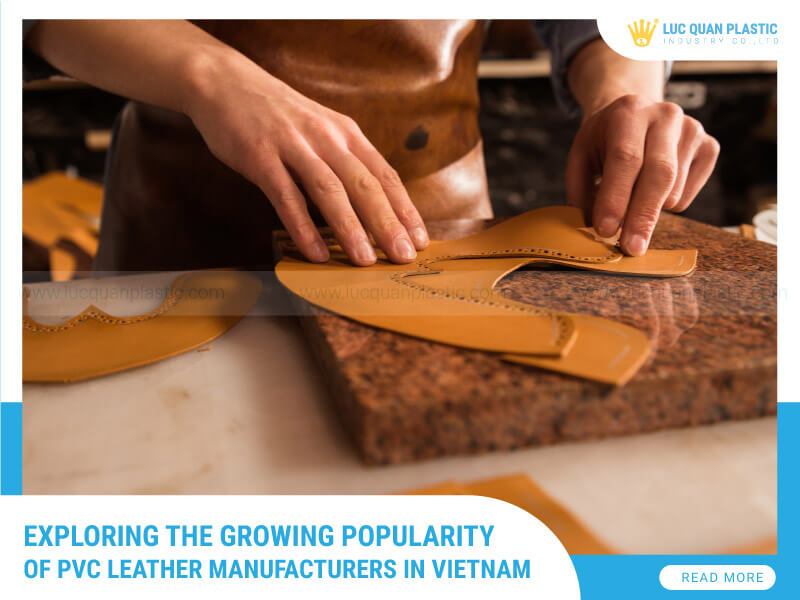
Illustrative image related to plastic leather
Impact on Application: Bio-based leather is suitable for fashion items and furniture where sustainability is a priority. However, its variability in performance may limit its use in high-stress applications.
Considerations for International Buyers: Compliance with environmental regulations is crucial, particularly in European markets where sustainability is a growing concern.
What Are the Benefits of Using Recycled Leather in Production?
Recycled leather, made from scraps of genuine leather or synthetic leather, is gaining traction as a sustainable option. This material combines recycled fibers with adhesives to create a new product.
Pros: Using recycled leather reduces waste and promotes sustainability. It can offer the look and feel of genuine leather at a lower cost.
Cons: The quality and durability of recycled leather can vary, depending on the source materials. It may also have limitations in terms of color and texture consistency.
Impact on Application: Recycled leather is suitable for fashion accessories and upholstery, appealing to consumers looking for eco-friendly options.
Considerations for International Buyers: Buyers should ensure that recycled leather products meet local quality and safety standards, especially in regions with strict regulations.
Summary of Material Selection for Plastic Leather
| Material | Typical Use Case for plastic leather | Key Advantage | Key Disadvantage/Limitation | Relative Cost (Low/Med/High) |
|---|---|---|---|---|
| Polyurethane (PU) | Furniture, automotive upholstery, fashion | Soft texture, affordable, easy to clean | Less UV resistant, may fade over time | Low |
| Polyvinyl Chloride (PVC) | Outdoor furniture, marine upholstery | Highly durable, water-resistant | Lower breathability, higher environmental impact | Low |
| Bio-based Leather | Fashion items, eco-friendly furniture | Sustainable, biodegradable | Higher cost, variable performance | Medium |
| Recycled Leather | Fashion accessories, upholstery | Reduces waste, eco-friendly | Variable quality, limited consistency | Medium |
This guide provides B2B buyers with a comprehensive understanding of the materials used in plastic leather production, enabling them to make informed decisions based on their specific needs and market requirements.
In-depth Look: Manufacturing Processes and Quality Assurance for plastic leather
What Are the Main Stages of Manufacturing Plastic Leather?
The manufacturing process of plastic leather, commonly known as faux leather, involves several critical stages: material preparation, forming, assembly, and finishing. Each stage is essential to ensure the final product meets the necessary quality and performance standards demanded by B2B buyers.
Material Preparation: What Materials Are Used in Plastic Leather Production?
The primary materials used in the production of plastic leather are polyurethane (PU) and polyvinyl chloride (PVC). These synthetic materials are chosen for their durability, flexibility, and cost-effectiveness. In the initial stage, these polymers are mixed with additives that enhance their properties, such as plasticizers for flexibility and stabilizers for UV resistance. This mixture is then processed into sheets or coatings that will serve as the base for the faux leather.
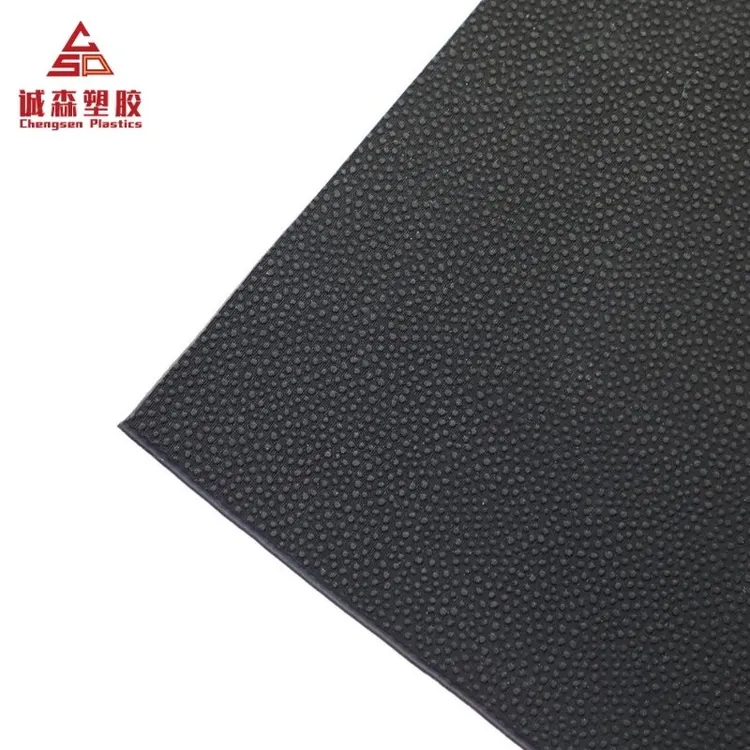
Illustrative image related to plastic leather
How Is Plastic Leather Formed?
The forming stage involves applying the prepared polymer mixture onto a substrate, typically a textile backing. This is achieved through various techniques, including:
- Coating: The polymer is spread over the fabric using rollers, ensuring an even layer. This method is common for producing thinner faux leather.
- Lamination: In this process, the polymer is bonded to the fabric using heat and pressure, which enhances durability and texture.
- Extrusion: For thicker materials, the polymer can be extruded into sheets that are then cooled and cut to size.
These techniques allow manufacturers to create a variety of textures and finishes, mimicking the appearance of genuine leather.
What Are the Key Steps in the Assembly and Finishing of Plastic Leather?
Once the material is formed, it moves to the assembly stage, where it is cut and sewn into the desired products, such as upholstery, bags, or garments. This stage may also involve:
- Die Cutting: Precision cutting to ensure accurate shapes and sizes.
- Sewing: Stitching the pieces together using specialized sewing machines designed for synthetic materials.
The finishing stage is crucial as it enhances the product’s appearance and performance. Common finishing techniques include:
- Embossing: Creating a leather-like grain pattern on the surface, which adds texture.
- Coating: Applying a protective layer that improves resistance to stains, water, and UV light.
- Coloring: Dyes or pigments can be applied to achieve a wide range of colors.
How Is Quality Assurance Implemented in Plastic Leather Manufacturing?
Quality assurance (QA) is vital in the manufacturing process to ensure that the final products meet international standards and customer expectations. Key elements of QA in plastic leather production include compliance with relevant international standards, systematic quality checkpoints, and testing methods.
What Are the Relevant International Standards for Plastic Leather?
For manufacturers targeting international markets, adherence to standards such as ISO 9001 (Quality Management Systems) is crucial. This certification ensures that companies maintain consistent quality in their products and processes. Additionally, industry-specific certifications, such as CE marking for products sold in Europe and API standards for automotive applications, may be required depending on the end-use.
What Are the Quality Control Checkpoints in the Manufacturing Process?
Quality control (QC) checkpoints are integrated at various stages of the manufacturing process:
- Incoming Quality Control (IQC): This initial checkpoint assesses the quality of raw materials upon arrival. Materials that do not meet specifications are rejected.
- In-Process Quality Control (IPQC): During manufacturing, regular inspections are conducted to monitor the production process and identify any deviations from quality standards.
- Final Quality Control (FQC): Before products are shipped, a thorough inspection is performed to ensure they meet all specifications and quality requirements.
What Common Testing Methods Are Used for Plastic Leather?
Several testing methods are employed to assess the quality and performance of plastic leather:
- Physical Tests: These include tensile strength, tear resistance, and abrasion resistance tests to ensure durability.
- Chemical Tests: Assessments for resistance to stains, water, and UV light help determine the longevity of the material.
- Environmental Tests: Some manufacturers may conduct tests to evaluate the material’s performance under different environmental conditions, ensuring it meets the needs of various applications.
How Can B2B Buyers Verify Supplier Quality Control?
For B2B buyers, verifying the quality control processes of potential suppliers is essential to ensure they are sourcing high-quality products. Here are some actionable steps:
- Audits: Conducting on-site audits of the manufacturing facilities can provide insights into the supplier’s quality management practices and adherence to standards.
- Requesting Quality Reports: Buyers should request detailed quality assurance reports that outline the QC processes, testing results, and compliance with international standards.
- Third-Party Inspections: Engaging third-party inspection services can provide an unbiased assessment of the supplier’s quality control measures and product quality.
What Are the Quality Control Nuances for International B2B Buyers?
International B2B buyers must navigate various quality control nuances when sourcing plastic leather from different regions. For instance:
- Regulatory Compliance: Different countries have varying regulations regarding the use of synthetic materials. Buyers should ensure their suppliers comply with local laws, especially in regions like the EU, where regulations can be stringent.
- Cultural Expectations: Quality perceptions may vary by region. For example, European buyers may prioritize eco-friendliness and sustainable practices, while Middle Eastern buyers may focus on durability and luxury aesthetics.
- Logistical Considerations: Understanding the logistical challenges, such as shipping times and customs regulations, is crucial for maintaining quality throughout the supply chain.
By paying close attention to these aspects of manufacturing processes and quality assurance, B2B buyers can make informed decisions when sourcing plastic leather products, ensuring they receive high-quality materials that meet their specific needs.
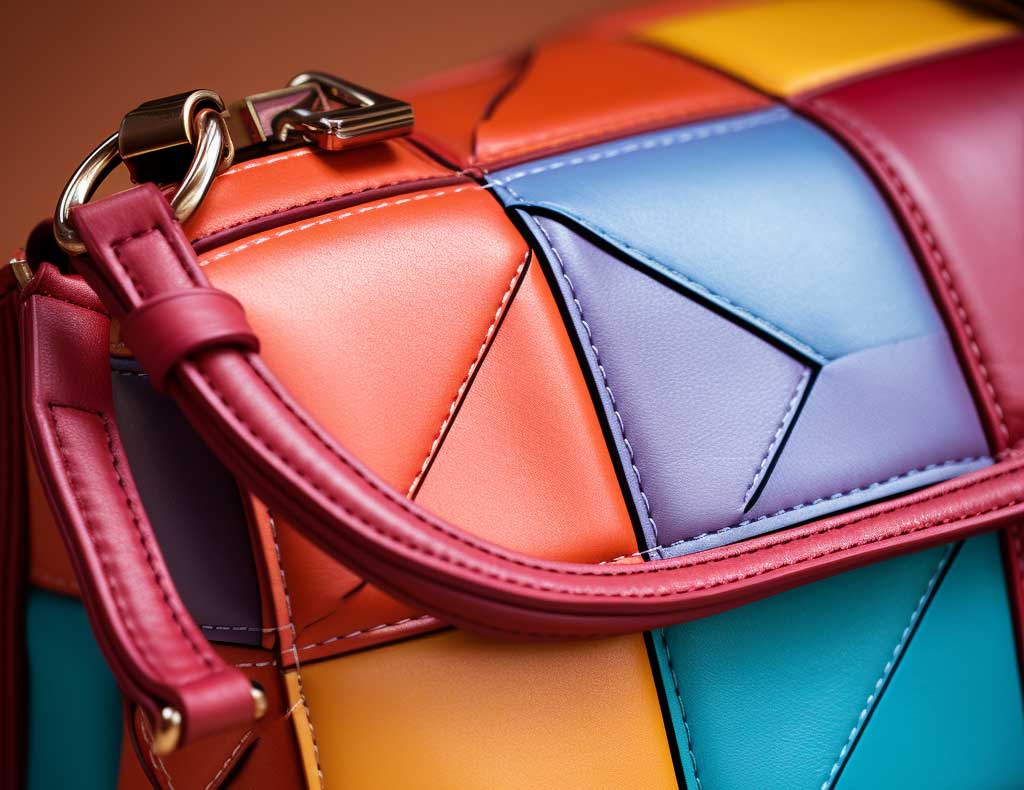
Illustrative image related to plastic leather
Practical Sourcing Guide: A Step-by-Step Checklist for ‘plastic leather’
To successfully procure plastic leather, B2B buyers must navigate various considerations ranging from material specifications to supplier reliability. This guide outlines essential steps to ensure a smooth sourcing process and to secure high-quality products that meet business needs.
Step 1: Define Your Technical Specifications
Clearly outline the requirements for the plastic leather you intend to purchase. Consider factors such as thickness, texture, color, and intended use—whether for upholstery, automotive applications, or fashion items. Establishing these specifications helps streamline the sourcing process and ensures that suppliers can meet your expectations.
Step 2: Research Material Types
Understand the different types of plastic leather available in the market, primarily polyurethane (PU) and polyvinyl chloride (PVC). Each type has unique properties—PU leather tends to be softer and more durable, while PVC is often more cost-effective. Knowing the differences allows you to choose the right material for your specific applications.
Step 3: Identify Reputable Suppliers
Conduct thorough research to compile a list of potential suppliers. Look for manufacturers with a proven track record in producing plastic leather, especially those with experience in your industry. Utilize platforms such as trade shows, industry directories, and online marketplaces to find credible suppliers.
Step 4: ✅ Verify Supplier Certifications
Ensure that your chosen suppliers hold necessary certifications that guarantee quality and compliance with industry standards. Certifications such as ISO, REACH, or Oeko-Tex can indicate a commitment to quality and safety in manufacturing processes. This step is vital for mitigating risks associated with substandard materials.
Step 5: Request Samples
Before making a bulk order, always request samples of the plastic leather. Assess the samples for quality, texture, and appearance to ensure they align with your specifications. Testing samples allows you to evaluate how the material performs under different conditions, such as cleaning and wear.
Step 6: Negotiate Terms and Pricing
Once you have identified suitable suppliers and evaluated samples, engage in negotiations regarding pricing, minimum order quantities, and delivery timelines. Be clear about your budget constraints while also considering the value of quality materials. Establishing favorable terms can lead to long-term partnerships.
Step 7: Plan for Logistics and Distribution
Consider logistics aspects such as shipping costs, customs regulations, and lead times. Ensure that your suppliers can meet your delivery requirements, especially if you are sourcing internationally. Proper planning helps avoid delays and ensures that your supply chain remains uninterrupted.
By following these steps, B2B buyers can effectively navigate the sourcing process for plastic leather, ensuring they select the right materials from reliable suppliers while minimizing risks and maximizing value.
Comprehensive Cost and Pricing Analysis for plastic leather Sourcing
What Are the Key Cost Components in Sourcing Plastic Leather?
When analyzing the cost structure for sourcing plastic leather, it is essential to break down the various components involved. The primary cost components include materials, labor, manufacturing overhead, tooling, quality control (QC), logistics, and profit margins.
-
Materials: The cost of raw materials significantly influences the overall price. Plastic leather, often made from polyurethane (PU) or polyvinyl chloride (PVC), varies in price depending on the quality and specifications. Higher-quality materials typically come with a higher price tag.
-
Labor: Labor costs can fluctuate based on the manufacturing location. Regions with lower labor costs, such as parts of Asia, may offer competitive pricing, but this can impact quality and lead times.
-
Manufacturing Overhead: This includes expenses related to facilities, utilities, and general administrative costs. Efficient production processes can help reduce these costs, positively affecting pricing.
-
Tooling: Initial setup costs for molds and machinery can be substantial, especially for custom designs. These costs should be amortized over the expected production volume to determine the impact on unit pricing.
-
Quality Control (QC): Ensuring that products meet specific standards incurs additional costs. Certifications and testing can enhance product reliability but may increase the overall sourcing expense.
-
Logistics: Transportation costs must be considered, particularly for international buyers. Factors such as shipping methods, distances, and local tariffs can significantly influence final pricing.
-
Margin: Suppliers typically mark up their prices to ensure profitability. Understanding the typical margins in the industry can help buyers negotiate better deals.
How Do Price Influencers Affect the Cost of Plastic Leather?
Several factors can influence the pricing of plastic leather beyond the basic cost structure. Understanding these influences can aid in making informed purchasing decisions.
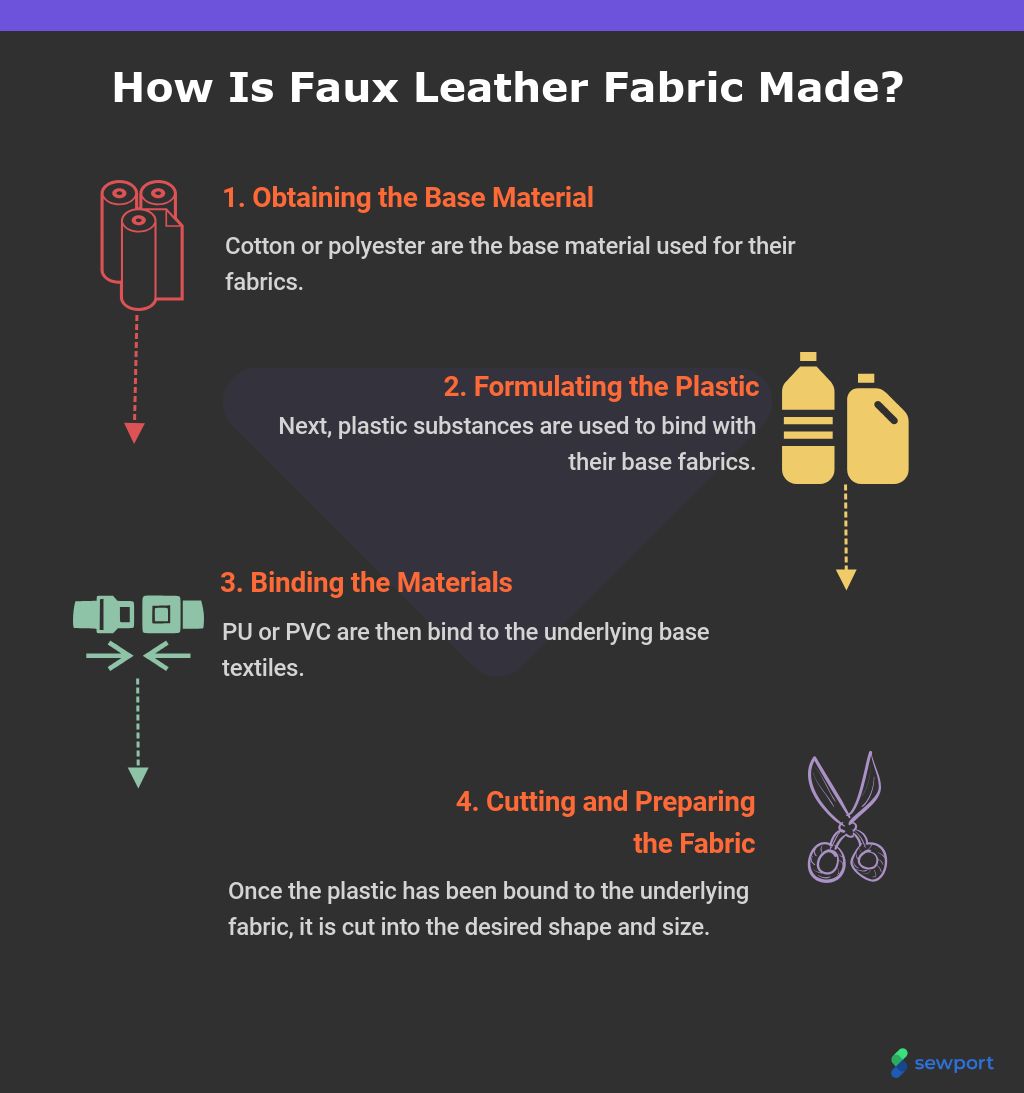
Illustrative image related to plastic leather
-
Volume/MOQ: Suppliers often offer tiered pricing based on minimum order quantities (MOQs). Larger orders can lead to significant discounts, making it crucial for buyers to assess their needs carefully.
-
Specifications and Customization: Custom designs or specific performance characteristics (e.g., water resistance, UV protection) may incur additional costs. Buyers should balance the need for customization with budget constraints.
-
Material Quality and Certifications: Higher-quality materials and certifications (e.g., ISO, REACH) can increase costs but may be necessary for certain applications, particularly in regulated markets.
-
Supplier Factors: The reputation and reliability of suppliers can affect pricing. Established suppliers may charge more due to their proven track record, while newer entrants might offer lower prices to gain market share.
-
Incoterms: The agreed-upon Incoterms (International Commercial Terms) can impact logistics costs and responsibilities. Understanding these terms can help buyers avoid unexpected expenses.
What Are Effective Negotiation Strategies for B2B Buyers?
For international B2B buyers, particularly from regions like Africa, South America, the Middle East, and Europe, effective negotiation strategies are critical for securing favorable terms.
-
Understand Total Cost of Ownership (TCO): Beyond the initial purchase price, consider ongoing costs such as maintenance, durability, and potential waste. This comprehensive view can strengthen your negotiation position.
-
Leverage Relationships: Building strong relationships with suppliers can lead to better pricing and terms. Regular communication and trust can facilitate more favorable negotiations.
-
Conduct Market Research: Knowledge of current market trends, competitor pricing, and supply chain dynamics can empower buyers during negotiations, providing leverage against suppliers.
-
Be Flexible with Terms: Offering to adjust order sizes or payment terms may result in discounts. Flexibility can be a powerful tool in negotiations.
-
Consider Long-Term Partnerships: Establishing long-term agreements can lead to better pricing and priority treatment from suppliers, benefiting both parties in the long run.
Conclusion: Navigating Pricing Nuances in International Markets
Sourcing plastic leather involves a complex interplay of costs and pricing influencers. By understanding the detailed cost structure and employing effective negotiation strategies, international B2B buyers can make informed decisions that align with their budget and quality requirements. While prices may vary widely, a comprehensive approach considering all factors can lead to successful sourcing outcomes.
Disclaimer: Prices mentioned in this guide are indicative and subject to change based on market conditions and supplier negotiations.
Alternatives Analysis: Comparing plastic leather With Other Solutions
When considering materials for upholstery and other applications, B2B buyers often evaluate various options to find the best fit for their needs. One popular choice is plastic leather, commonly known as faux leather or PU leather. However, it is essential to compare it with other viable alternatives to ensure an informed decision.
| Comparison Aspect | Plastic Leather (PU Leather) | Alternative 1: Genuine Leather | Alternative 2: Cork Fabric |
|---|---|---|---|
| Performance | Durable, water-resistant, easy to clean | Highly durable, luxurious feel, breathability | Durable, lightweight, water-resistant |
| Cost | 75% less expensive than genuine leather | Higher cost due to sourcing and processing | Generally lower than genuine leather but varies |
| Ease of Implementation | Readily available, easy to cut and sew | Requires specific tools and skills for cutting and stitching | Easy to work with, but can be more fragile |
| Maintenance | Low maintenance, resistant to stains | Requires regular conditioning and care | Easy to clean, but may need sealing |
| Best Use Case | Upholstery, automotive, fashion | High-end furniture, luxury goods | Eco-friendly products, fashion accessories |
What Are the Advantages and Disadvantages of Genuine Leather Compared to Plastic Leather?
Genuine leather is renowned for its durability and luxurious feel, making it a premium choice for high-end applications. It is breathable, which enhances comfort in clothing and upholstery. However, the higher cost and the need for regular maintenance, such as conditioning to prevent cracking, can be significant drawbacks. Additionally, sourcing genuine leather raises ethical concerns for some buyers, particularly those focused on sustainability.
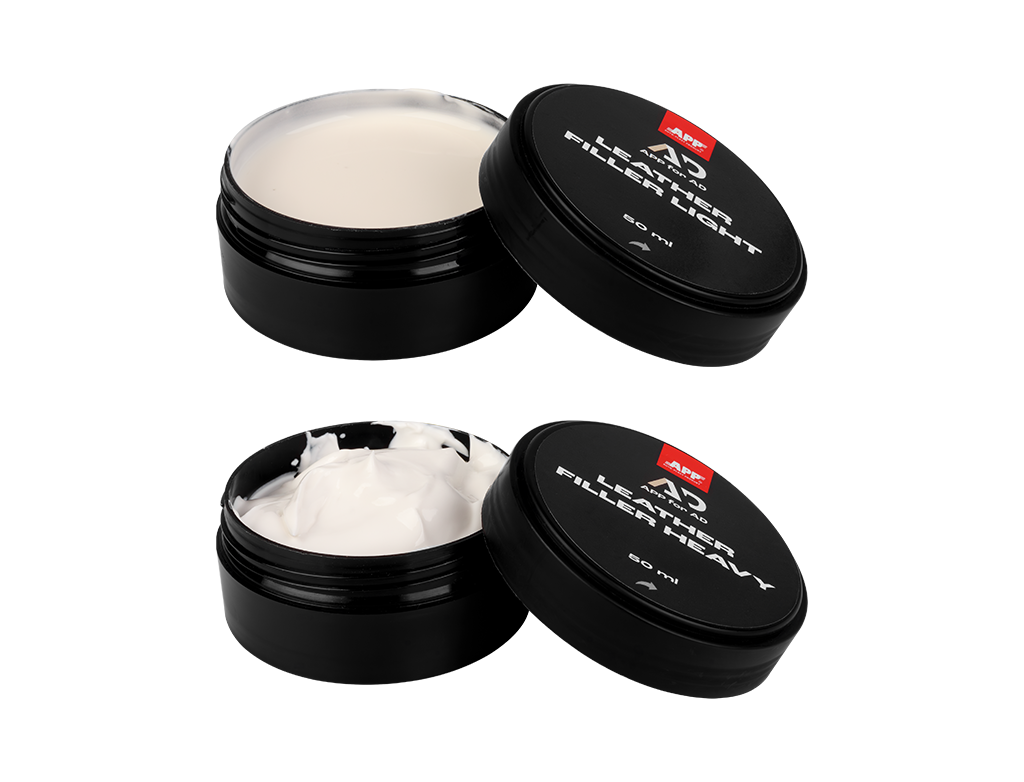
Illustrative image related to plastic leather
How Does Cork Fabric Compare to Plastic Leather in Terms of Sustainability and Use Cases?
Cork fabric is an innovative alternative made from the bark of cork oak trees. It offers a unique aesthetic and is lightweight, making it suitable for various applications, including fashion accessories and eco-friendly products. Its natural resistance to water and mold makes it an excellent choice for items exposed to moisture. However, cork may not provide the same level of durability as plastic leather, especially in high-wear environments. Additionally, while cork is eco-friendly, it may not be as readily available in diverse textures and colors as plastic leather.
How Should B2B Buyers Decide Between Plastic Leather and Its Alternatives?
When selecting the right material, B2B buyers should consider several factors, including budget, intended use, and maintenance requirements. Plastic leather offers a compelling combination of affordability, durability, and low maintenance, making it ideal for a wide range of applications. Genuine leather appeals to those seeking luxury and authenticity but comes with higher costs and ethical considerations. Cork fabric serves as an eco-conscious option, perfect for brands focused on sustainability, though it may not match the durability of plastic leather.
Ultimately, the decision should align with the buyer’s specific needs, market positioning, and the environmental impact they wish to prioritize. Each material has its strengths and weaknesses, and understanding these will help in making an informed choice that balances quality, cost, and ethical considerations.
Essential Technical Properties and Trade Terminology for plastic leather
When navigating the world of plastic leather, understanding its essential technical properties and industry terminology is crucial for B2B buyers. This section aims to clarify these aspects to help international buyers make informed decisions.
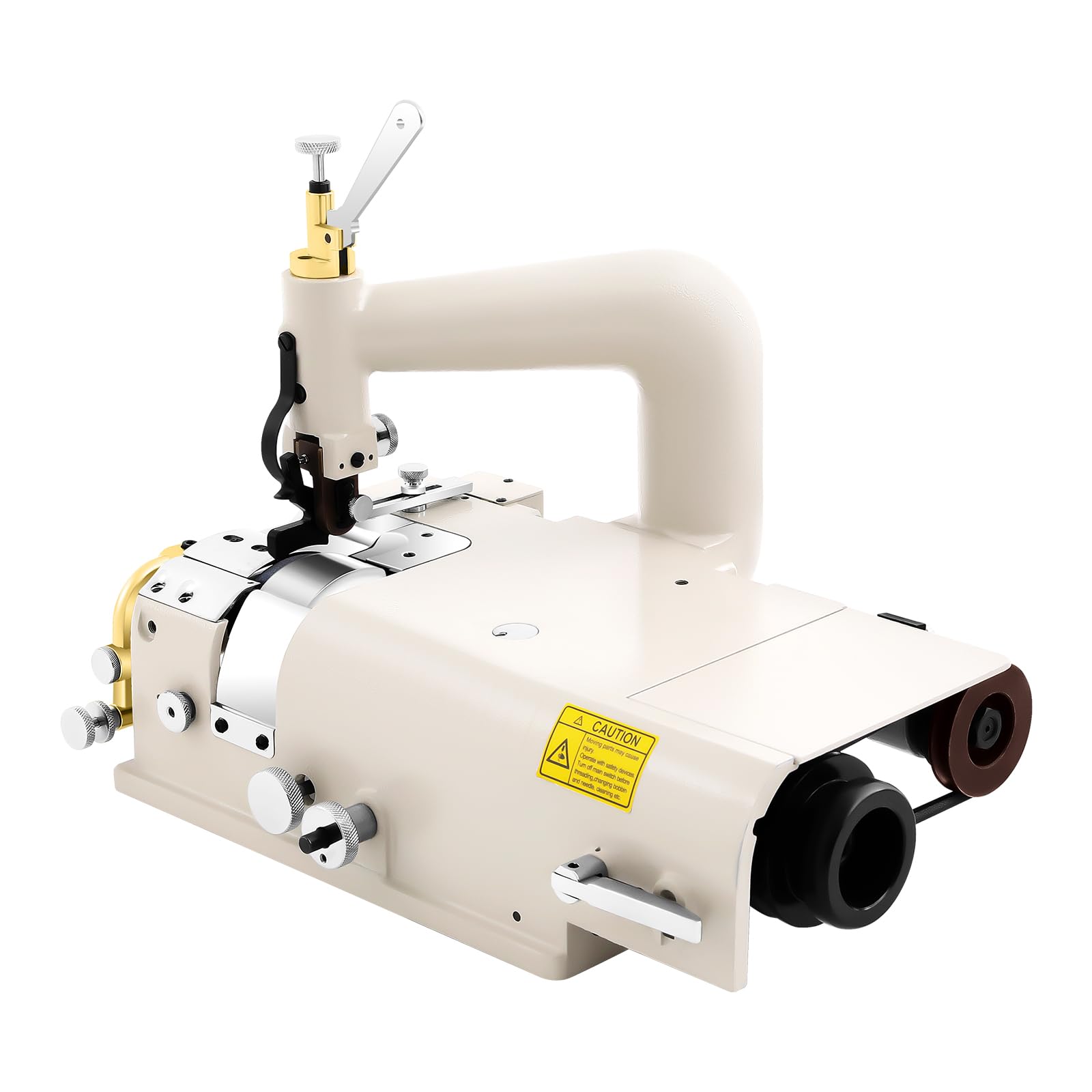
Illustrative image related to plastic leather
What Are the Key Technical Properties of Plastic Leather?
-
Material Composition
Plastic leather, often referred to as faux leather or synthetic leather, can be composed of various materials, primarily polyurethane (PU) or polyvinyl chloride (PVC). PU leather is known for its softness and durability, making it a popular choice for high-end applications. In contrast, PVC leather, while more cost-effective, may lack the same level of comfort. Understanding the material composition is vital as it directly affects the product’s performance, durability, and cost. -
Durability Rating
The durability of plastic leather is often rated based on its resistance to wear and tear, which is crucial for applications in upholstery, automotive, and marine settings. A higher durability rating indicates a longer lifespan and reduced replacement costs. Buyers should consider this rating to ensure that the material meets the specific demands of their projects, particularly in high-traffic or high-use environments. -
Water and Stain Resistance
Many plastic leather products are treated to be water and stain-resistant, which is essential for maintaining aesthetics and functionality. This property simplifies maintenance, making it a preferable option for commercial upholstery in restaurants or healthcare facilities where hygiene is paramount. Buyers should inquire about these treatments to assess their long-term viability. -
Colorfastness
Colorfastness refers to a material’s ability to retain its color when exposed to light, washing, or abrasion. This property is especially important for products exposed to sunlight, such as outdoor furniture or automotive interiors. A high level of colorfastness ensures that the plastic leather maintains its appearance over time, reducing the need for replacements or refinishing. -
Breathability
Although plastic leather generally has lower breathability compared to genuine leather, some advanced versions are designed to offer better air circulation. This property is significant for applications like clothing or seating, where moisture and heat retention can lead to discomfort. Buyers should assess the breathability requirements based on the intended use to ensure user satisfaction.
What Are Common Trade Terms in the Plastic Leather Industry?
-
OEM (Original Equipment Manufacturer)
OEM refers to a company that produces parts or equipment that may be marketed by another manufacturer. In the plastic leather industry, OEMs often create bespoke products tailored to specific client needs. Understanding OEM relationships can help buyers source customized solutions efficiently. -
MOQ (Minimum Order Quantity)
MOQ is the minimum quantity of a product that a supplier is willing to sell. This term is critical for buyers as it can impact inventory management and cash flow. Knowing the MOQ can help businesses plan their purchasing strategies and negotiate better terms with suppliers. -
RFQ (Request for Quotation)
An RFQ is a document sent to suppliers requesting a detailed price quotation for specified goods or services. In the plastic leather market, submitting an RFQ allows buyers to compare prices, terms, and product specifications, facilitating informed decision-making. -
Incoterms (International Commercial Terms)
Incoterms are a set of international rules that define the responsibilities of sellers and buyers in global trade transactions. Familiarity with these terms helps buyers understand shipping costs, risks, and obligations related to delivery, which is essential for effective logistics planning. -
Contract Grade
This term refers to materials that meet specific industry standards for commercial use, such as durability and safety. Buyers should look for contract-grade plastic leather when sourcing materials for high-traffic areas, ensuring that the products will stand up to rigorous use.
By grasping these properties and terminology, B2B buyers can enhance their purchasing strategies and foster successful partnerships in the plastic leather industry.
Navigating Market Dynamics and Sourcing Trends in the plastic leather Sector
What Are the Key Drivers Shaping the Plastic Leather Market?
The plastic leather market is experiencing significant growth, driven by a convergence of factors including cost-effectiveness, versatility, and evolving consumer preferences. As an alternative to genuine leather, plastic leather—often referred to as faux leather or PU leather—offers substantial savings, with prices up to 75% lower than traditional leather. This affordability makes it particularly appealing in emerging markets across Africa and South America, where budget constraints often dictate purchasing decisions.
Technological advancements are also reshaping the landscape. Innovations in manufacturing processes have led to enhanced product quality, making synthetic options more durable and visually appealing. For instance, the development of lightweight, flexible materials that mimic the texture of genuine leather has broadened the applications for plastic leather in sectors such as automotive upholstery, furniture, and fashion.
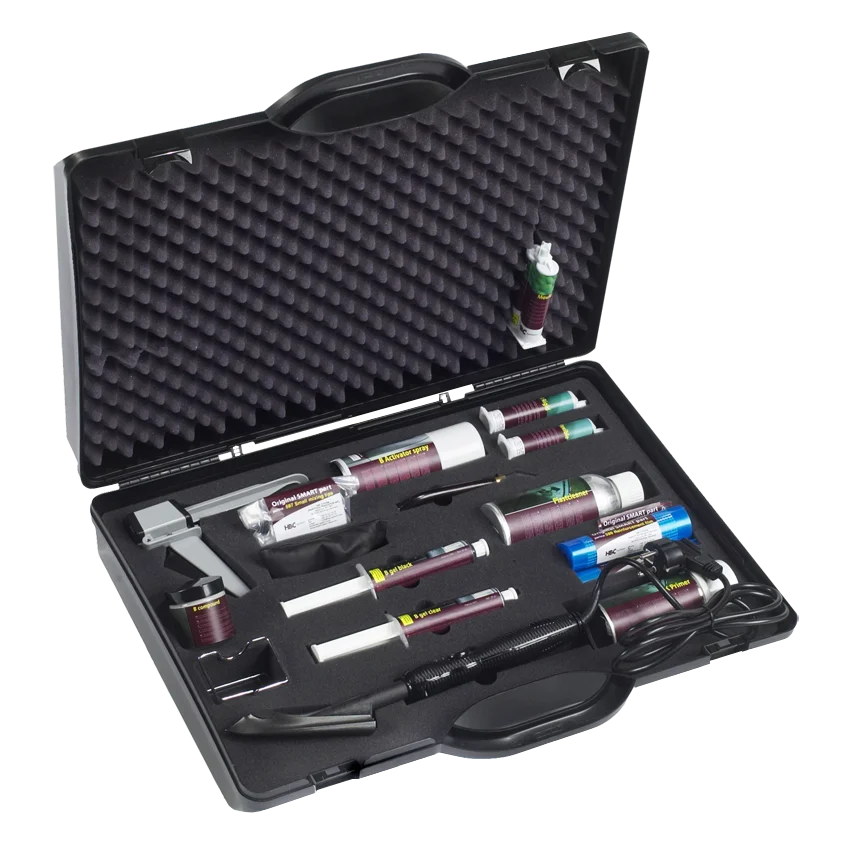
Illustrative image related to plastic leather
Furthermore, international trade dynamics are increasingly favoring countries like China, which remains the largest producer and exporter of plastic leather. B2B buyers in Europe, particularly in Germany, are tapping into these supply chains to source high-quality materials efficiently. Emerging e-commerce platforms are facilitating access to diverse product offerings, allowing buyers to compare options and make informed purchasing decisions quickly.
How Is Sustainability Influencing Sourcing in the Plastic Leather Sector?
The environmental impact of material sourcing is becoming a top priority for B2B buyers in the plastic leather sector. As sustainability concerns escalate globally, businesses are seeking alternatives that not only meet performance criteria but also adhere to ethical standards. Plastic leather, particularly when made from polyurethane (PU), can be a more sustainable option compared to animal-derived leather, but it is essential to consider the source of materials.
Ethical supply chains have gained prominence, with many manufacturers now focusing on sustainable practices, such as using recycled materials or adopting eco-friendly production methods. Buyers should look for suppliers who hold certifications like Global Recycled Standard (GRS) or OEKO-TEX, which indicate adherence to environmental and social standards.
Additionally, the shift towards vegan and cruelty-free products is influencing consumer behavior, particularly in Europe and North America. B2B buyers are increasingly required to align their sourcing strategies with these values, ensuring their product offerings resonate with environmentally conscious consumers.
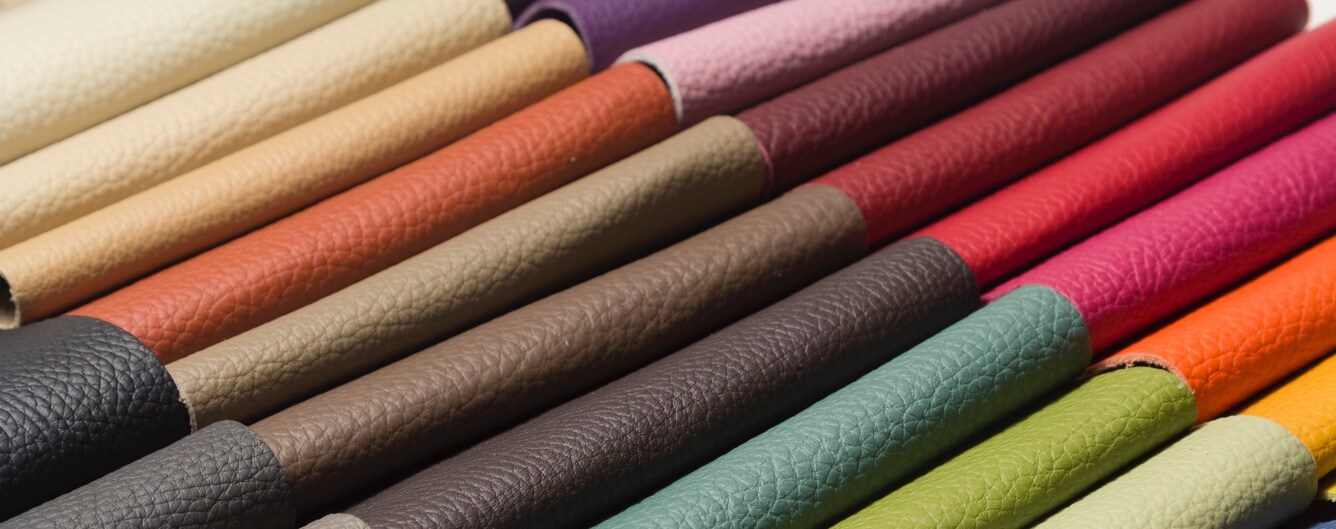
Illustrative image related to plastic leather
What Is the Historical Context of Plastic Leather in B2B Markets?
The evolution of plastic leather can be traced back to the early 20th century, when the first synthetic leather alternatives were developed. The introduction of Naugahyde in the 1920s marked a significant milestone, offering a durable and visually appealing alternative to genuine leather. Over the decades, advancements in polymer technology have led to the diversification of plastic leather types, including PVC and PU options, which cater to various industry needs.
Today, the plastic leather market is characterized by a rich variety of textures and finishes, allowing for extensive customization in applications ranging from fashion to automotive interiors. This historical context is essential for B2B buyers to understand the material’s journey and its growing importance in contemporary supply chains, especially as the demand for sustainable and cost-effective solutions continues to rise.
In summary, understanding the market dynamics, sustainability considerations, and historical context of plastic leather empowers international B2B buyers to make informed sourcing decisions that align with both their business goals and the evolving landscape of consumer preferences.
Frequently Asked Questions (FAQs) for B2B Buyers of plastic leather
-
How do I choose the right type of plastic leather for my project?
Choosing the right type of plastic leather, such as PU (polyurethane) or PVC (polyvinyl chloride), depends on your specific application. PU leather is often preferred for its softness and durability, making it ideal for upholstery and fashion items. In contrast, PVC is more rigid and typically used in products requiring greater water resistance. Consider factors like intended use, environmental conditions, and required durability when making your selection. Additionally, consult with suppliers for samples to assess texture and performance. -
What are the advantages of sourcing plastic leather over genuine leather?
Sourcing plastic leather offers numerous advantages, including cost-effectiveness, as it can be up to 75% cheaper than genuine leather. It’s also easier to maintain, resistant to stains, water, and mildew, and available in a wider range of colors and textures. Furthermore, plastic leather is a vegan alternative, appealing to environmentally conscious consumers. The durability of plastic leather often surpasses that of genuine leather, making it a long-lasting option for various applications. -
What minimum order quantities (MOQs) should I expect when sourcing plastic leather?
Minimum order quantities for plastic leather can vary significantly between suppliers. Typically, MOQs range from 100 to 1,000 yards or more, depending on the manufacturer and product type. Bulk orders often result in lower prices per unit, but smaller quantities may be available for specific projects. It’s advisable to communicate your needs with potential suppliers to negotiate favorable terms that align with your production capacity. -
How can I ensure the quality of plastic leather before making a bulk purchase?
To ensure quality, request samples from suppliers before committing to bulk orders. Assess the samples for texture, durability, and colorfastness. Additionally, inquire about certifications that verify compliance with international standards, such as ISO or REACH. Consider conducting third-party inspections or audits at the supplier’s facility to verify production practices. Establishing clear quality assurance criteria in your purchase agreement can also help mitigate risks. -
What payment terms are common for international suppliers of plastic leather?
Payment terms for international suppliers can vary widely. Common arrangements include a 30% upfront deposit with the remaining balance due before shipment, or payment via letter of credit. Some suppliers may offer net terms, allowing payment within 30 to 90 days post-delivery. Always clarify payment methods accepted, such as bank transfers or PayPal, and ensure that terms are documented in your contract to avoid misunderstandings. -
How can I vet suppliers when sourcing plastic leather internationally?
Vetting suppliers involves a thorough due diligence process. Start by researching their reputation through online reviews and industry forums. Request references from previous clients and check their business licenses and certifications. Conduct video calls to gauge their communication and professionalism. If possible, visit the supplier’s facility to assess their production capabilities and quality control measures. Partnering with a local sourcing agent can also provide insights into the supplier’s reliability. -
What logistics considerations should I keep in mind when importing plastic leather?
When importing plastic leather, consider shipping methods, lead times, and customs regulations specific to your country. Air freight is faster but more expensive, while sea freight is cost-effective for larger shipments. Be aware of import duties and taxes that may apply, and ensure that your supplier provides all necessary documentation, such as invoices and certificates of origin, to facilitate customs clearance. Establishing a reliable logistics partner can streamline the process and minimize delays. -
Are there customization options available for plastic leather products?
Yes, many suppliers offer customization options for plastic leather products, including color, texture, and thickness. Some manufacturers can also provide bespoke designs or embossed patterns to meet specific branding requirements. Discuss your customization needs upfront, as some options may require minimum order quantities or additional lead times. Ensure that all specifications are documented to avoid discrepancies during production.
Top 3 Plastic Leather Manufacturers & Suppliers List
1. Sewport – Faux Leather Solutions
Domain: sewport.com
Registered: 2015 (10 years)
Introduction: Faux leather, also known as pleather, vegan leather, Naugahyde, synthetic leather, artificial leather, fake leather, ersatz leather. Fabric composition includes PVC or vegetable oils. Properties: low breathability, low moisture-wicking abilities, high heat retention, low stretchability, low prone to pilling/bubbling. First produced in the United States, with China as the biggest exporting/producin…
2. Adams Plastics – Imitation Leather Solutions
Domain: adamsplastics.com
Registered: 2002 (23 years)
Introduction: Imitation leather, also known as faux leather, pleather, synthetic leather, or vegan leather, is manufactured from polyurethane, PVC, or vegetable oils. Benefits include: affordable cost, cruelty-free production, low maintenance, durability, variety in finishes and colors, uniformity in appearance, and ease of manufacturing. Two main types of faux leather upholstery fabric are: Polyurethane (PU) L…
3. Kiki Textiles – Faux Leather Fabric by the Yard
Domain: kikitextiles.com
Registered: 2021 (4 years)
Introduction: Faux leather (pleather) fabric by the yard available in various colors and styles. Key features include:
– Price range: $13.99 – $14.50 per yard
– Color options: Beige, Black, Brown, Burgundy, Caramel, Chocolate, Cognac, Dusty Blue, Fuchsia, Gold, Gray, Hot Pink, Ivory, Kelly Green, Lavender, Magenta, Mauve, Mustard, Navy, Nude, Off White, Olive Green, Orange, Pink, Purple, Red, Royal Blue, Sage G…
Strategic Sourcing Conclusion and Outlook for plastic leather
How Can Strategic Sourcing Enhance Your Plastic Leather Procurement?
In today’s competitive landscape, strategic sourcing of plastic leather provides significant advantages for B2B buyers across diverse industries. By opting for synthetic alternatives like PU leather, businesses can reduce material costs by up to 75% compared to genuine leather, while still achieving a premium aesthetic and functional quality. The versatility of plastic leather allows for wide-ranging applications, from automotive interiors to commercial upholstery, making it an ideal choice for various sectors.
Furthermore, the resilience of faux leather against water, stains, and mildew enhances product longevity, thereby reducing maintenance costs over time. This sustainability aspect resonates well with environmentally conscious consumers, bolstering brand reputation. As the global demand for ethical and cost-effective materials continues to rise, sourcing plastic leather strategically will be vital for maintaining a competitive edge.
Looking ahead, international buyers from regions such as Africa, South America, the Middle East, and Europe should seize this opportunity to diversify their supplier base and explore innovative offerings. Engage with reputable manufacturers to ensure quality, sustainability, and compliance with local regulations. The time to act is now—secure your supply chain and position your business for success in the evolving market of plastic leather.
Important Disclaimer & Terms of Use
⚠️ Important Disclaimer
The information provided in this guide, including content regarding manufacturers, technical specifications, and market analysis, is for informational and educational purposes only. It does not constitute professional procurement advice, financial advice, or legal advice.
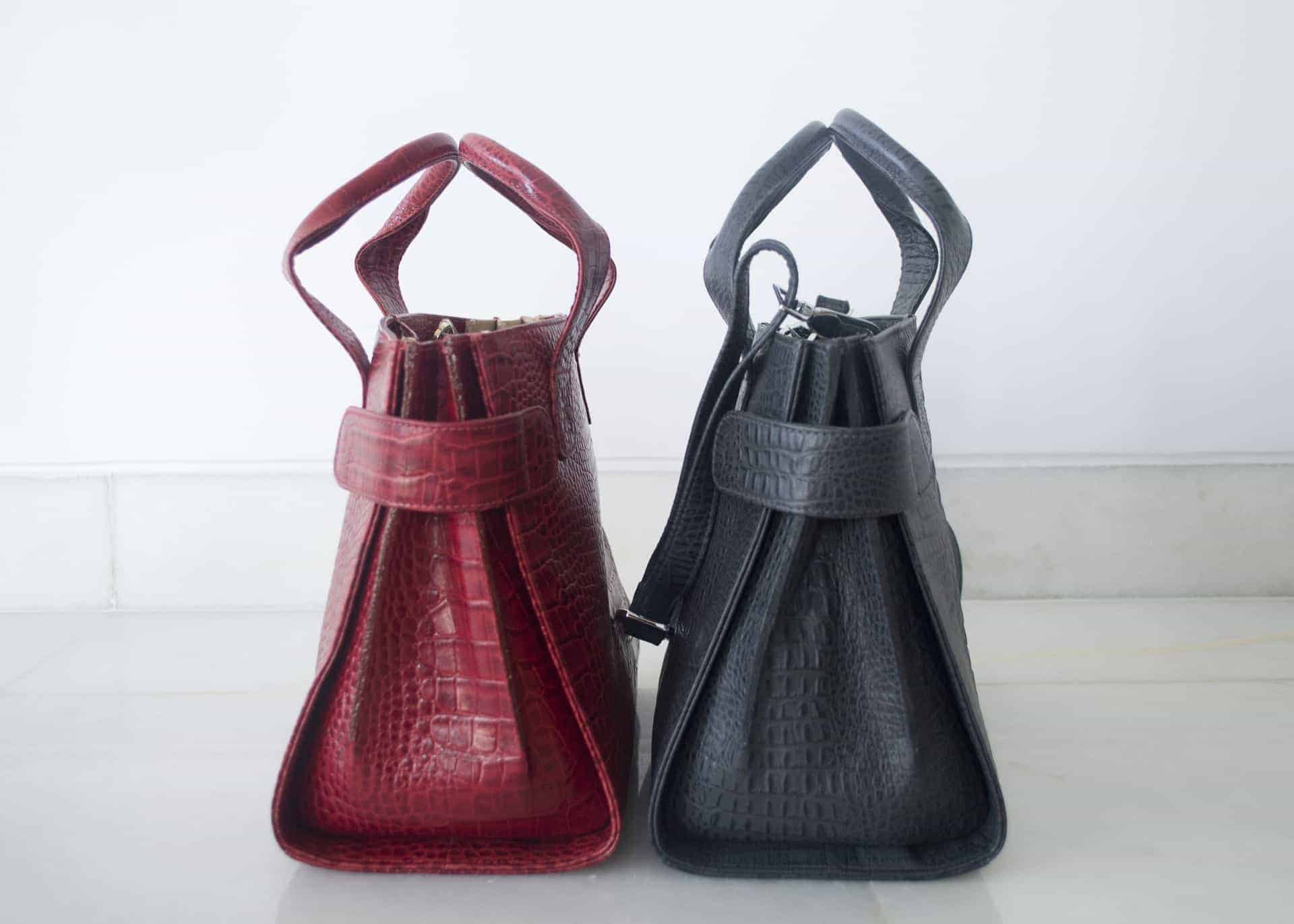
Illustrative image related to plastic leather
While we have made every effort to ensure the accuracy and timeliness of the information, we are not responsible for any errors, omissions, or outdated information. Market conditions, company details, and technical standards are subject to change.
B2B buyers must conduct their own independent and thorough due diligence before making any purchasing decisions. This includes contacting suppliers directly, verifying certifications, requesting samples, and seeking professional consultation. The risk of relying on any information in this guide is borne solely by the reader.



